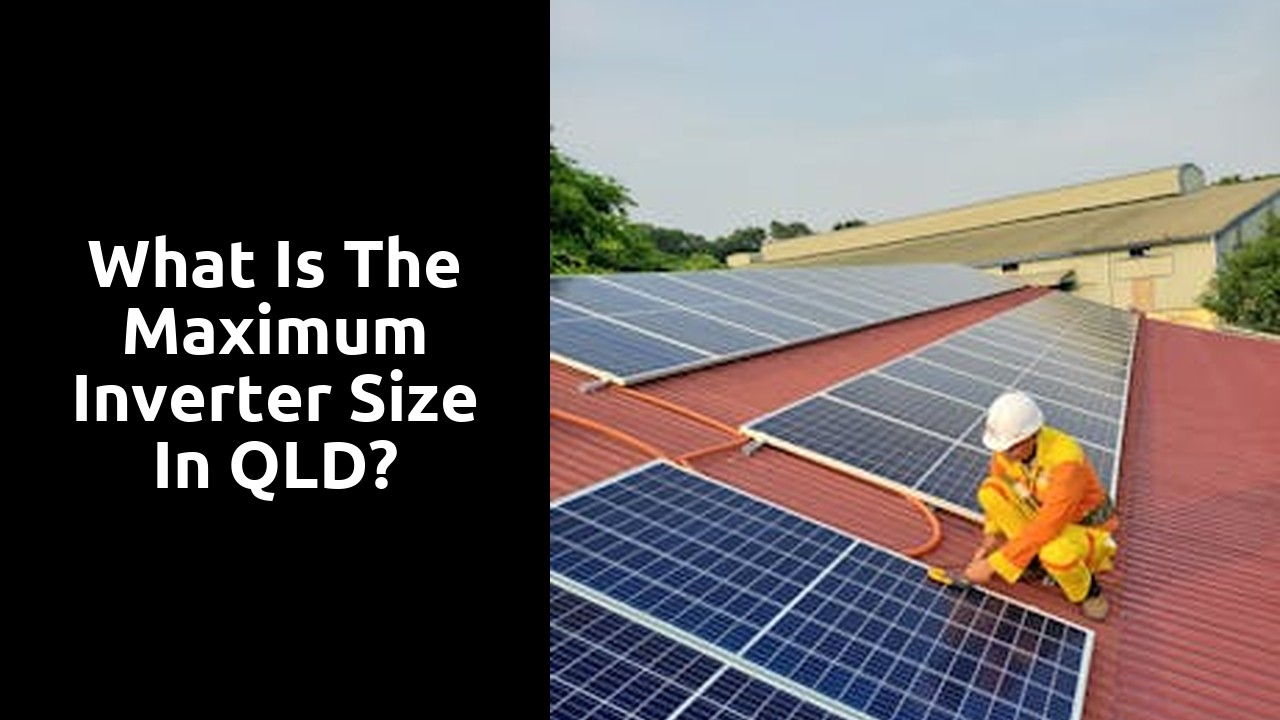
r
When considering the strategic placement of the solar inverter installation, it is crucial to select a location that allows for optimal performance and safety. The solar inverter should be placed in a spot that is easily accessible for maintenance and monitoring purposes. Additionally, positioning the solar inverter in an area with good ventilation can help prevent overheating, which could potentially impact its efficiency and lifespan.
Furthermore, it is advisable to place the solar inverter in a shaded area to avoid exposure to direct sunlight for prolonged periods. Direct sunlight and high temperatures can cause the inverter to work harder and, therefore, reduce its efficiency. By strategically placing the solar inverter in a shaded spot, you can help ensure its longevity and performance over time.
Monitoring and Performance Tracking
Monitoring and tracking the performance of your solar inverter installation is crucial for ensuring optimum efficiency. Regularly monitoring key metrics such as energy production, system uptime, and any potential issues can help you stay on top of the system's health. By keeping a close eye on performance data, you can identify any anomalies or drops in efficiency early on, allowing you to address them promptly and avoid any significant setbacks.
In Australia, where the weather can be quite unpredictable, having robust monitoring systems in place is even more important. The ability to track your solar inverter's performance in real-time can help you make informed decisions about your energy consumption and production. Using monitoring software, you can access detailed reports and analytics that provide insights into how your solar installation is performing, enabling you to adjust settings or address any issues promptly to maximise efficiency and savings.
Critical Aspects of Solar Inverter Installation
When considering the critical aspects of solar inverter installation, one key factor to take into account is the protection of the inverter from environmental elements. In Australia, where weather conditions can vary greatly, it is vital to ensure that the solar inverter is installed in a location where it is shielded from direct sunlight, rain, and excessive heat. This will not only prolong the lifespan of the inverter but also ensure optimal performance throughout its usage.
Additionally, another crucial aspect to consider is the wiring and connectivity of the solar inverter. Proper installation of wiring is essential to ensure the efficient flow of electricity from the solar panels to the inverter and then to the electrical grid. It is important to pay attention to the positioning of the inverter in relation to the solar panels to minimize energy loss and maximize the efficiency of the solar power system. By carefully addressing these critical aspects of solar inverter installation, you can ensure reliable and long-lasting performance of your solar power system.
Protection from Environmental Elements
Proper protection from environmental elements is vital when determining the location for your solar inverter installation. The inverter is a crucial component of your solar energy system, converting DC power generated by the solar panels into usable AC power for your home. Exposure to harsh weather conditions like extreme heat, rain, or dust can negatively impact the performance and longevity of the inverter. Therefore, it is recommended to place the inverter in a sheltered area, away from direct sunlight and moisture.
Another consideration for protecting the solar inverter is ensuring proper ventilation to prevent overheating. Adequate airflow around the inverter is essential to maintain its efficiency and prevent it from shutting down due to excessive heat build-up. Additionally, protecting the inverter from physical damage caused by debris or unwanted intruders is essential for its uninterrupted operation. By taking these precautionary measures, you can safeguard your solar inverter installation and ensure its optimal performance throughout its lifespan.
FAQS
Where is the recommended spot for installing a solar inverter in Australia?
The recommended spot for installing a solar inverter in Australia is indoors, preferably in a well-ventilated area with easy access for maintenance.
How important is maintenance and accessibility when it comes to installing a solar inverter?
Maintenance and accessibility are crucial aspects of solar inverter installation as they ensure easy monitoring, troubleshooting, and repairs when needed.
What should one consider when strategically placing a solar inverter?
When strategically placing a solar inverter, consider factors such as proximity to the solar panels, distance from the electrical meter, and avoiding direct sunlight exposure.
How can monitoring and performance tracking benefit the installation of a solar inverter?
Monitoring and performance tracking can help in identifying any issues or inefficiencies with the solar inverter promptly, allowing for timely maintenance and optimization.
What are the critical aspects to consider during solar inverter installation?
Critical aspects to consider during solar inverter installation include protection from environmental elements, proper ventilation, secure mounting, and compliance with local regulations.
How can one protect a solar inverter from environmental elements in Australia?
To protect a solar inverter from environmental elements in Australia, ensure it is installed in a sheltered area, away from direct sunlight, excessive heat, moisture, and dust. Regularly inspect and clean the inverter to maintain its performance."""
